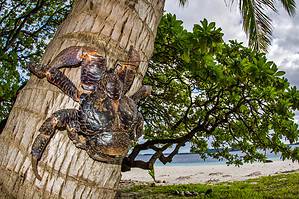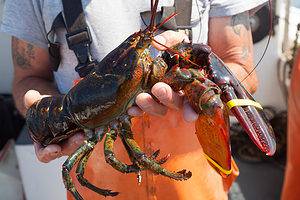The bairdi crab and king crab are two distinct crab varieties. Bairdi is a snow crab variety known as a queen crab. Opilio and bairdi crabs reign supreme as the most widely distributed commercial species of snow crab. Alaskan red, blue, and brown king crabs are the most common king crab species in the state of Alaska. We’ll look at six major differences between the bairdi and the king crab in this article.
Bairdi Crab vs King Crab: A Comparison
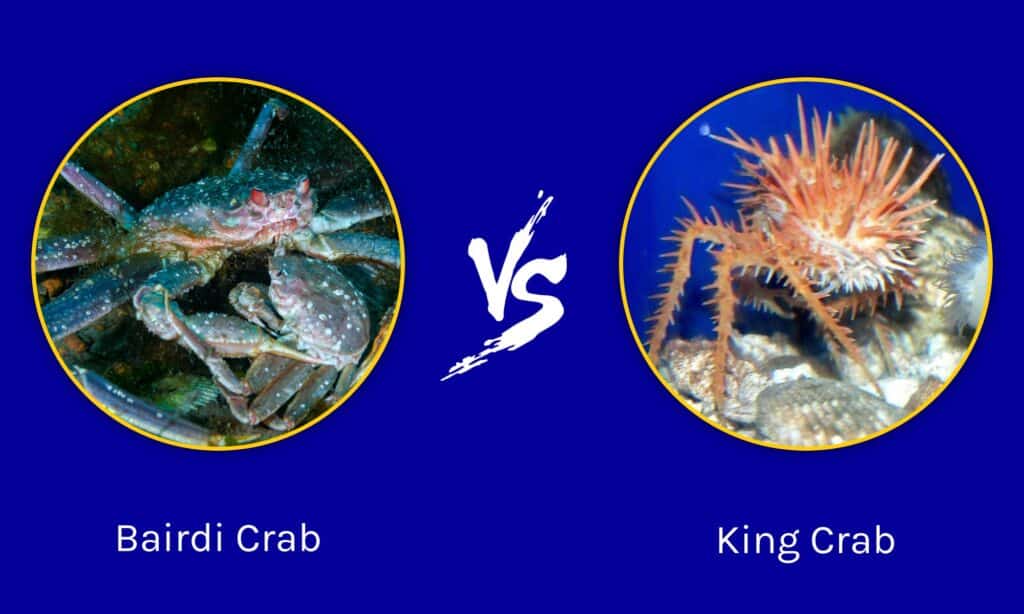
| Bairdi Crab | King Crab | |
|---|---|---|
| Size | 3 feet wide; 5 lbs. | 5 – 6 feet wide; 6 – 20 lbs. |
| Looks | Red/Pink with Claws | Brownish to Bluish Red |
| Location | Bering Sea, Atlantic, North Pacific | Pacific and Arctic Oceans |
| Eating Habits | Crustaceans, Clams, Worms | Algae, Worms, Mussels, Small Fish |
| Consumption | $25 – $30 a pound | $60 – $70 a pound |
| Life Expectancy | 12 to 14 years | Up to 30 years |
Key Differences Between Bairdi Crab vs King Crab
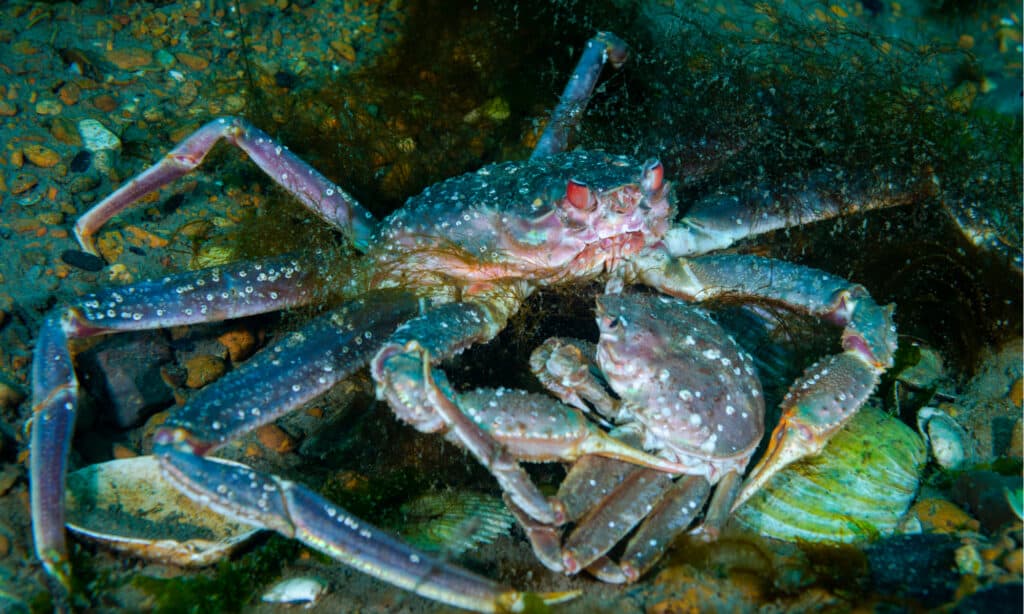
Bairdi crabs have a shorter life expectancy.
©Shpatak/Shutterstock.com
The key differences between bairdi crab and king crab are size, appearance, health factors, and location. Decapod crustaceans, such as king crabs, thrive in frigid waters. The red king crab is the most sought-after food crab due to its large size and high-quality flesh. Chionoecetes Bairdi and Chionoecetes Opilio are the two most common species of snow crabs. The flavor of crab is heavily influenced by its environment, eating habits, and geographic location. For example, snow crab meat is firm, sweet, and has a briny taste, whereas king crab meat is richer in flavor and more tender in texture.
Bairdi Crab vs King Crab: Size
Averaging 5 pounds and stretching 3 feet from tip to tip, bairdi is the largest species of snow crab. With an average weight of 6 to 10 pounds, a king crab is still larger than a Bairdi crab. Some king crabs can reach a weight of 20 pounds with a leg span of 6 feet.
Bairdi Crab vs King Crab: Appearance
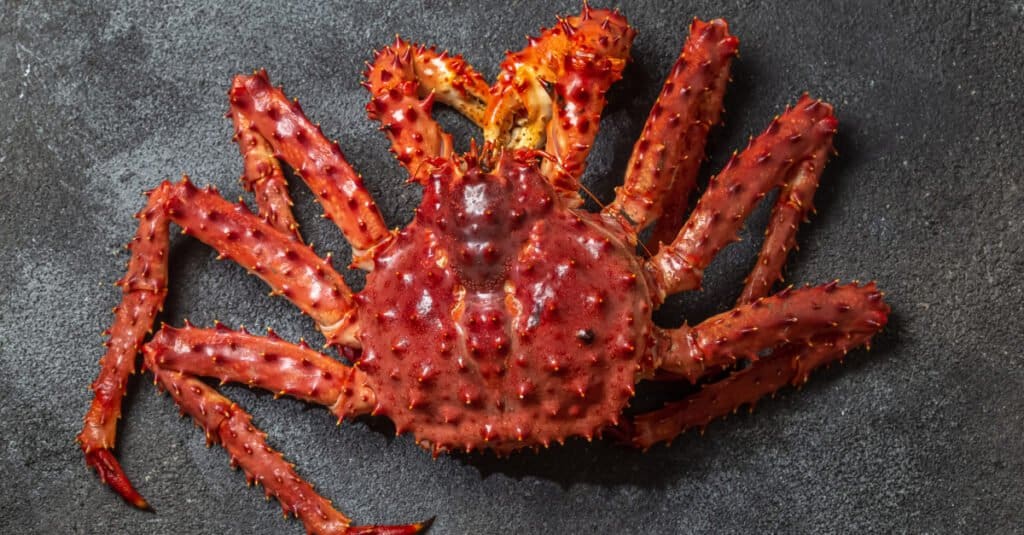
King crabs are covered in a shell called the carapace.
©Larisa Blinova/Shutterstock.com
Red king crabs are some of the largest crabs commercially collected. In terms of color, they might range from a brownish tint to a bluish-red hue. They have five pairs of walking legs.
Smaller crabs, bairdi features four sets of walking legs, as well as a pair of claws. The meat inside the shells varies in color from brilliant red to pale pink, but it is all the same quality.
Bairdi Crab vs King Crab: Geographic Location
The chilly Pacific and Arctic waters along the coasts of Japan, Alaska, and British Columbia, Canada, are home to king crabs. Additionally, they have been introduced to the northern reaches of the Atlantic Ocean, near Russia. Bairdi crabs live in the Bering Sea, the northwest Atlantic Ocean, and the northern Pacific Ocean.
Bairdi Crab vs King Crab: Eating Habits
A bairdi’s food is primarily composed of other bottom-dwelling crustaceans, clams, and worms. Their primary predators are bottom fish and humans. King crabs eat and crush anything they can get their claws on. Smaller king crabs consume algae, tiny worms, clams, and other small prey. Larger crabs consume mussels, barnacles, crabs, fish, sea stars, sand dollars, and brittle stars.
Bairdi Crab vs King Crab: Human Consumption
Although Bairdi crabs are slightly larger than other snow crabs, they are still far less expensive per pound than king crabs. They often retail for between $25 and $30 per pound. A pound of king crab, on the other hand, costs between $60 and $70.
Snow crab from the Eastern Bering Sea and the Southern Gulf of St. Lawrence is the most sustainable option. On the other hand, the king crab from Russia should be avoided due to overfishing concerns.
Bairdi Crab vs King Crab: Life Expectancy
Male Red king crabs can live for up to 30 years, and females can live for up to 20 years. Bairdi Crabs are known to survive for more than a decade.
Wrapping Up Bairdi Crab vs King Crab
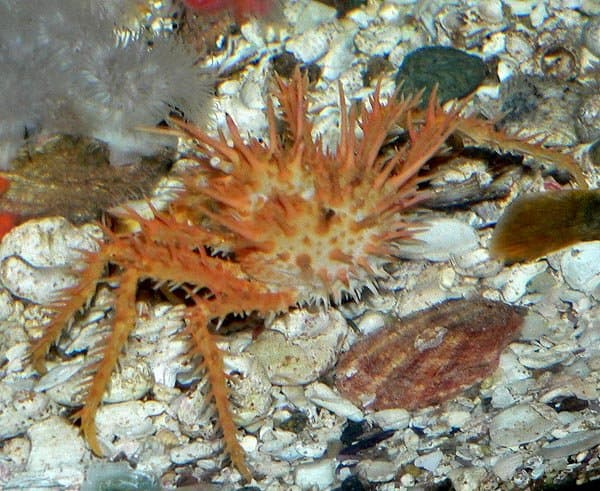
King crabs have five pairs of legs.
©Stan Shebs, CC BY-SA 3.0, via Wikimedia Commons – License
Compared to king crabs, Bairdi crabs are smaller and less red in color. These crabs have four legs instead of the king’s five. At 5 pounds and 3 feet long from tip to tip, bairdi is the largest snow crab. Fishing for crab is well-regulated and usually sustainable in the United States, but the long-term sustainability of current fishing practices is unknown. Australia and New Zealand both have a supply of sustainable crabs. Just look for crab goods that have the blue tick from the Marine Stewardship Council (MSC) on them.
Are Alaskan Snow Crabs Disappearing?
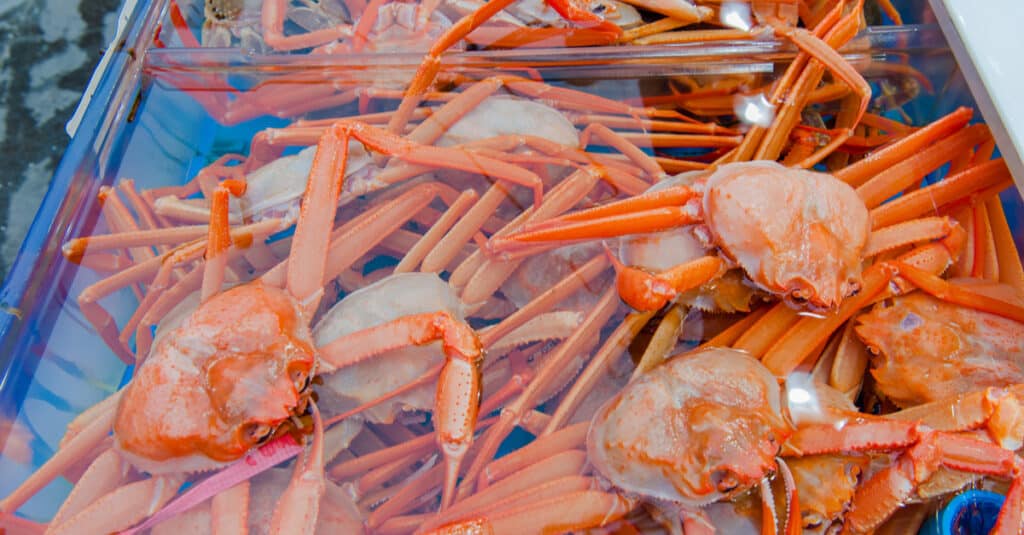
The Alaskan snow crab population in the Bering Sea took a major hit in the last five years, declining from 12 billion to less than 2 billion due to climate change.
©chuck hsu/Shutterstock.com
Alaskan snow crabs are an important species to the fishing industry in the United States. They are in fact one of the most popular types of crabs consumed in the U.S. The two types of snow crab legs harvested in the waters of the Bering Sea are Chionoecetes opilio and Chionoecetes Bairdi. However, the Alaskan snow crab population went into a tailspin in recent years when it was discovered that their numbers had shrunk from 12 billion to a little under 2 billion. While you might imagine this occurred because of overfishing, that’s actually not the case. The culprit researchers are blaming is climate change.
The decline, which took place between 2018 and 2022, is believed to have occurred due to warmer ocean temperatures. Alaskan snow crabs thrive in very cold water. In recent years, ice has decreased. An ice covering in winter keeps the waters very cold, while its melting in warmer months creates cold pools for young crabs to feed in. With warmer temperatures, snow crabs can die from starvation as these cold pools shrink, causing them to have to compete over fewer resources. Warmer water can also cause them to contract diseases, which may also contribute to the die-off.
The snow crab season was canceled in 2022 once news of the huge disappearance of billions of snow crabs was discovered, which negatively impacted those fishing companies that rely on catching snow crabs for their livelihood. This year (2023) saw the Alaska Department of Fish and Game close the Alaskan snow crab fishing season again, and it will also be closed in 2024. Hopefully, these animals can recover from this e
The photo featured at the top of this post is © Kondratuk Aleksei/Shutterstock.com
Thank you for reading! Have some feedback for us? Contact the AZ Animals editorial team.




